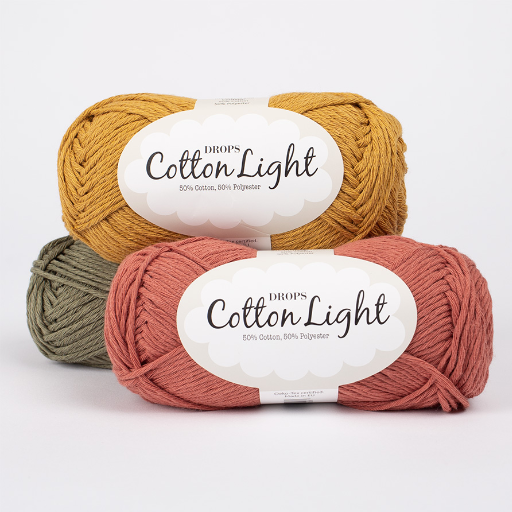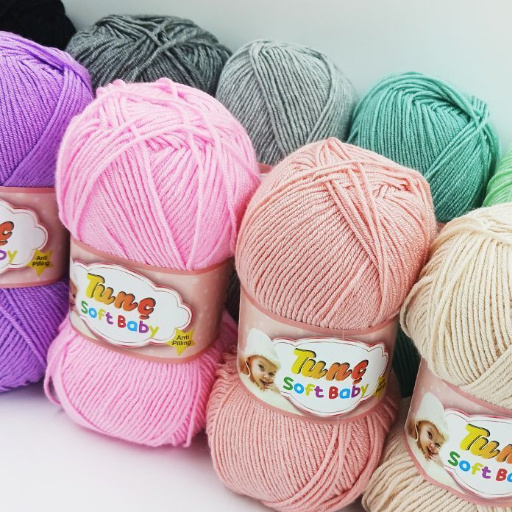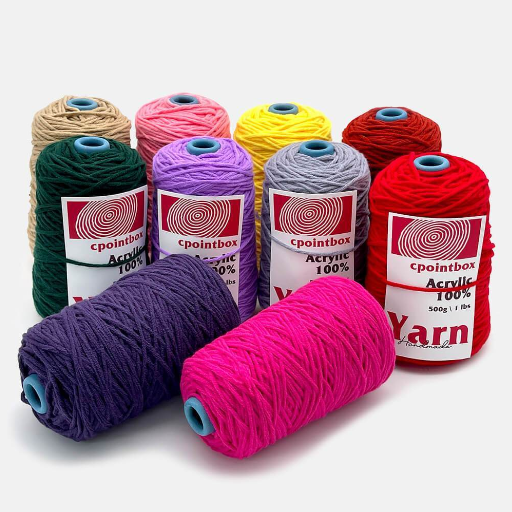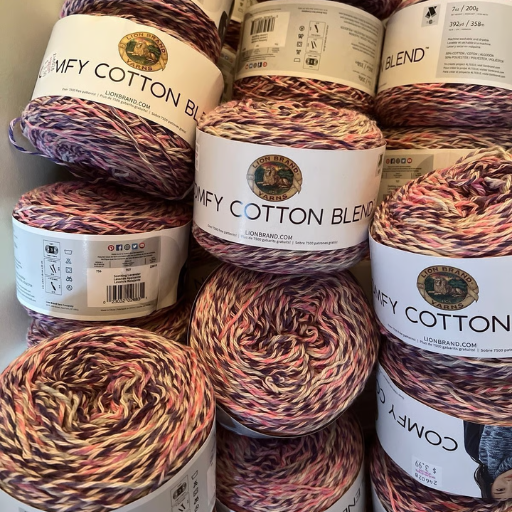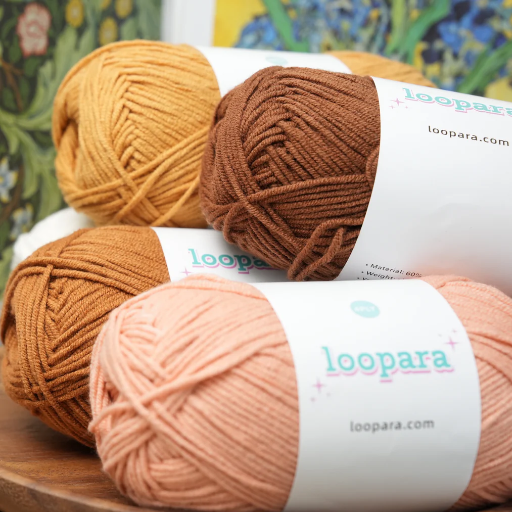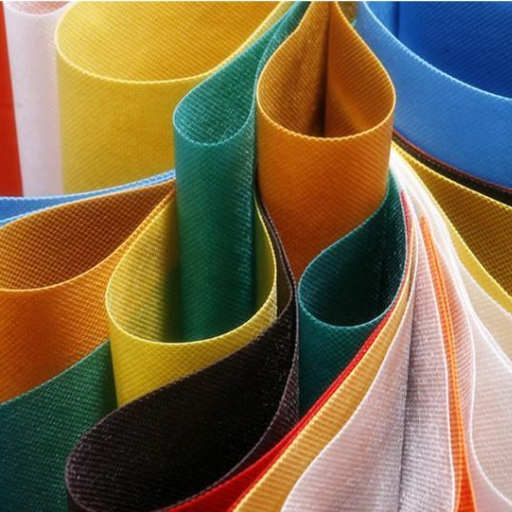One of the most important parts of sewing is learning how to thread a sewing machine. For beginners, this can be shocking until one grasps the whole concept. This guide will detail the simple steps needed to thread a Brother sewing machine.
Now, with spool preparation and thread positioning, this article also addresses threading the needle and machine setup testing, all aimed to explain optimal performance of the device. Some common errors, troubleshooting gaps, and their resolution methods are also discussed so that your sewing experience is not interrupted. By the end of this guide, you’ll be ready to effortlessly and accurately set up your Brother sewing machine.
What Are the Key Moments in Threading a Brother Sewing Machine?

To achieve effective operation and optimal performance from a Brother sewing machine, threading the machine involves several steps. For the first step, the spool of thread should be prepared correctly by attaching the spool to the spool pin in a secure manner and capping the spool to retain its position. For the second step, the thread should be placed into the machine along the path marked for ‘threading’ while ensuring to follow the designated thread guides and tension discs. In the third step, the thread must be pulled through the take-up lever, which is crucial for stitch formation. Ensure that thread uptake is also done properly. For the final step, the needle can be threaded manually or by the automatic needle threader in the machine as it is more accurate. Efforts must be made to follow these steps to ensure that issues related to thread tension do not arise and the machine can operate efficiently.
How to Raise the Presser Foot and Needle
To set up your Brother sewing machine, raising the presser foot and needle is straightforward but very important. To raise the presser foot, ensure that you locate the lever which is usually located on the side or back of the sewing machine, and lift it upwards. By doing this, the fabric can now be placed accurately under the foot without obstruction. To raise the needle, gently turn the hand wheel towards you (which is counterclockwise) until the needle reaches its highest desired position. Some machines have a needle up/down button which, when pressed, also raises the needle. Completing these steps means the machine is pegged for threading and insertion of fabric.
Steps to Thread the Upper Thread Properly
Threading the upper thread correctly is essential to ensure smooth sewing operations and to prevent issues such as skipped stitches, uneven tension, or thread breakage. Follow these detailed steps to thread the upper thread properly:
- Power Off the Machine
Begin by turning off your sewing machine to prioritize safety during the threading process.
- Raise the Presser Foot and Needle
Make sure both the presser foot and the needle are in their highest positions. This step ensures that the thread will pass into the tension discs correctly.
- Position the Thread Spool
Place the thread spool onto the spool pin and securely fit the spool cap to prevent the spool from moving during threading.
- Guide the Thread Through the Threading Path
Pull the thread and guide it through the machine’s threading path. Start by leading the thread through the thread guide at the top of the machine. Then bring it down through the tension disc area, following any marked threading pathways.
- Engage the Take-Up Lever
Bring the thread up and pass it through the take-up lever, ensuring it is hooked properly. This step is critical for maintaining thread control during stitching.
- Thread the Guides and Needle
Continue guiding the thread through the remaining thread guides on the machine, ensuring it follows the correct path down to the sewing area. Finally, thread the needle by hand or using the machine’s built-in automatic needle threader, if available.
- Pull the Thread Under the Presser Foot
After threading the needle, gently pull a few inches of thread under the presser foot and to the back of the machine. This ensures the thread is positioned to begin stitching efficiently.
By adhering to these steps, you align the thread properly with the machine’s mechanisms, ensuring optimal tension and preventing mechanical issues during operation. Always consult your machine’s manual if the threading process varies for your specific model.
Guidelines to Turn the Balance Wheel Correctly
The balance wheel, located on the right side of the sewing machine, is essential for manually controlling the needle’s movement. To avoid mechanical issues, always turn the balance wheel towards you (counter-clockwise). This ensures the internal mechanisms, like the needle bar and feed dogs, move in synchronization with the bobbin system.
- Prevent Backlash in the Bobbin Case
Turning the wheel in the correct direction reduces the chance of thread tangles and prevents the bobbin case from jamming or loosening, which can lead to skipped stitches or damage.
- Use for Manual Precision
The balance wheel is particularly useful for making precise adjustments, such as when stitching over thick seams, starting a new stitch, or positioning the needle for threading.
- Avoid Reverse Rotation
Turning the wheel in reverse (clockwise) risks disrupting the thread tension and timing of the machine, potentially causing parts to wear faster or break.
By consistently following these guidelines, you ensure the durability and efficiency of your sewing machine, prolonging its operational lifespan. For detailed instructions specific to your model, refer to the manufacturer’s manual.
How Do I Thread the Bobbin on a Brother Sewing Machine?

To thread the bobbin on a Brother sewing machine, follow these steps:
- Prepare the Machine
Ensure the machine is turned off and place the spool of thread on the spool pin. Secure it with a spool cap appropriate for the thread’s size.
- Guide the Thread
Pull the thread from the spool and pass it through the thread guide on top of the machine. Follow the threading path, typically indicated by arrows or numbers on the machine.
- Wind the Bobbin
Insert the thread through the bobbin’s hole from the inside out. Place the bobbin on the bobbin winder spindle and push it to the right to engage the winder. Hold the thread end while pressing the foot pedal or start button to wind the thread a few turns onto the bobbin. Cut the excess thread and continue winding until the bobbin is full.
- Place the Bobbin
Remove the bobbin from the winder and trim the thread. Open the bobbin case or compartment, depending on your model, and insert the bobbin, ensuring it spins in the correct direction as per your manual.
- Draw the Bobbin Thread
Hold the top thread and turn the balance wheel towards you to pick up the bobbin thread. Pull both threads towards the back of the machine.
For best results, always refer to your Brother sewing machine manual for model-specific instructions.
Steps to Wrap the Thread Around the Bobbin
To wrap the thread around the bobbin effectively, I follow these steps based on standard machine functions and verified methods:
- Prepare the Thread
I ensure the spool of thread is securely placed on the spool pin and that the thread passes through the thread guide following the recommended threading path. This setup ensures smooth feeding during the winding process.
- Engage the Bobbin Winder
After inserting the thread through the bobbin, I position the bobbin onto the bobbin winder spindle and slide the spindle to the right, activating the winding mechanism. While pressing the foot pedal or using the start button, I allow the thread to wind evenly around the bobbin, keeping hold of the thread tail for the first few rotations.
- Monitor Winding Progress
I observe the filling process to confirm uniform winding. Once the bobbin reaches its capacity, the winder typically halts automatically. I then stop the machine, trim the thread, and remove the bobbin from the spindle.
These concise, actionable steps streamline the process for optimal thread winding, ensuring readiness for sewing without thread disruptions. For precise details, I always consult my sewing machine’s official manual.
How to Pass the Thread Through the Bobbin Case
- Insert the Bobbin into the Case
Place your wound bobbin into the bobbin case, ensuring that the thread unwinds in the correct direction—usually counterclockwise for most machines. Refer to your machine’s manual to confirm the appropriate orientation for your specific model.
- Pull the Thread Through the Slot
Locate the small opening or slot on the side of the bobbin case. Guide the thread into this slot carefully, ensuring it rests snugly. This step is critical for maintaining controlled thread tension during sewing.
- Pass the Thread Under the Tension Spring
Draw the thread beneath the tension spring located on the bobbin case. Pull lightly to confirm the thread moves smoothly yet holds sufficient resistance, as this ensures balanced tension when stitching.
- Position the Bobbin Case
For front-loading machines, insert the bobbin case into the sewing machine’s designated compartment. Ensure it locks securely into place. For drop-in bobbins, simply place the bobbin and thread into the top compartment, following the manufacturer’s threading indicators.
- Draw Up the Bobbin Thread
Hold the upper thread and turn the machine’s handwheel towards you. This action allows the needle to pick up the bobbin thread. Once the thread is pulled up, use your fingers or a tool to draw both threads behind the presser foot, preparing for seamless stitching.
By following these steps, users can ensure the bobbin case is correctly threaded, facilitating smooth operation and consistent stitch quality. Always cross-check with your sewing machine’s manual for model-specific instructions.
How to Thread a Sewing Machine for Beginners?

- Wind the Bobbin
Place the empty bobbin on the bobbin winder spindle. Securely attach the thread spool to the spool pin, following your machine’s pathway to set up winding. Engage the bobbin winding mechanism and run the machine to fill the bobbin evenly.
- Insert the Bobbin
For front-loading machines, insert the wound bobbin into the bobbin case, ensuring the thread flows in the correct direction as per the manual. For drop-in bobbins, place the bobbin into the top compartment, following the threading indicators.
- Thread the Upper Mechanism
Position the spool of thread on the spool pin. Guide the thread through the threading path, starting with the thread guide, tension disks, and the take-up lever, then down to the needle. Refer to your machine’s threading instructions to ensure proper tension.
- Thread the Needle
Pass the thread through the eye of the needle from front to back. Double-check that no tangles or slack are present in the threading. For machines with an automatic needle threader, utilize this feature as it simplifies the process.
- Draw Up the Bobbin Thread
Hold the upper thread lightly and turn the handwheel towards you to lower and raise the needle. This motion pulls the bobbin thread up through the plate. Pull both threads back and under the presser foot to prepare for stitching.
By following these concise steps, beginners can efficiently thread a sewing machine, ensuring proper setup for smooth, high-quality sewing results. Always consult your machine’s user manual for any model-specific guidance.
The Role of the Spool Pin in Threading
Every sewing machine contains a spool pin which serves as the holder for the spool of thread as well as maintaining proper tension on the thread angle, The spindle pin also allows the thread to unwind during sewing, preventing any intertwisting of the thread. When gauged from the sewing machine head, spool pins can be arranged in horizontal or vertical position. Horizontal pins allow thread to unwind from top, while vertical pins enable extraction from the side.
To place thread into the sewing machine, cap the top of the pin with a cap that matches the size of the spool. As the machine runs, this will ensure the thread spool does not slip off or wobble. When using the free arm, correct alignment helps to ensure that there is no tangling, which may result in stitches being uneven. During sewing, make sure to examine the pin on the spool for debris which may cause disruptions throughout your project.
How to Guide the Thread Through the Machine
- Place the Thread on the Spool Pin: Ensure the thread spool is secured on the spool pin with a compatible spool cap to maintain stability during operation. Horizontal spool pins should use spools with a smooth unwinding mechanism, while vertical pins require free-standing spools.
- Pull the Thread Through the Thread Guide: Gently draw the thread from the spool and insert it into the first thread guide, located near the spool pin. This step aligns the thread correctly and prepares it for the subsequent threading process.
- Thread Through the Tension Mechanism: Following the path indicated by your machine’s manual, loop the thread through the tension discs or tension slots, ensuring it is seated firmly in place. Proper tension is critical for even stitches and consistent feeding.
- Navigate the Thread Take-Up Lever: Guide the thread up into the take-up lever, passing through its eye or hook as directed. The take-up lever ensures the thread moves effectively during each stitch cycle.
- Insert the Thread Into Additional Guides: Lead the thread through any intermediate guides located on the machine’s faceplate or near the needle assembly. Each guide ensures smooth delivery of thread to the needle.
- Thread the Needle: Finally, align the thread with the needle’s eye and pass it through, either manually or with the aid of an automatic needle threader, if available. Make sure to pull enough thread through to allow for a proper starting tail.
- Check the Thread Path: Before beginning operation, confirm that the thread follows the correct path as illustrated in your machine’s guide. Improper threading can cause tension imbalances, tangling, or skipped stitches.
By adhering to these steps, you ensure reliable, efficient machine performance and reduce threading issues. Always refer to your sewing machine manual for model-specific instructions.
Ensuring the Thread Goes Behind the Needle
To ensure the thread is positioned correctly behind the needle, start by pulling the threaded tail gently after threading the needle. Guide the thread under the presser foot and pull it toward the rear of the machine, ensuring it rests smoothly on the feed dogs. This step is critical as it clears the thread path for smooth fabric feeding during sewing. Additionally, verify that the needle is correctly installed with the flat side facing the appropriate direction as specified in your sewing machine manual. Misalignments can cause complications such as thread breakage or skipped stitches. For maximum accuracy, always refer to your machine’s threading diagram and operating guide.
Can I Thread a Brother LS Model Specifically?

Absolutely. You can thread a Brother LS sewing machine by completing the following steps. First, loosen the tension by raising the presser foot lever and turn the handwheel until the needle is lifted. This makes it easier to place the spool of tread on the spool pin. Next, draw the thread through the top thread guide. Afterward, follow the threading path indicated on your machine, which includes routing the thread through the tension disc, and the take-up lever, along with other guides as required. Finally, pull the thread under the presser foot towards the back after threading the needle from the front. For model-specific details, always refer to the Brother LS manual to ensure precise threading.
Special Instructions for Threading the Needle
Threading the needle on a Brother LS model requires precision to ensure optimal sewing performance. Begin by turning the handwheel to raise the needle to its highest position, and ensure the presser foot is lifted to release tension. Take the end of the thread and pass it through the needle bar thread guide, which ensures proper alignment. Then, thread the needle from front to back using either your hands or an automatic needle threader if your model is equipped with one. Make sure the thread passes cleanly through the needle’s eye without fraying or tangling. Pull a few inches of thread through and position it under the presser foot towards the back to prevent it from tangling during initial stitches. Double-check your threading at each step to avoid skipped stitches or uneven tension. Always follow the guidance in your machine’s manual for optimal results.
How to Thread Behind the Needle Bar Thread Guide
The Brother LS model has a certain threading technique controlled through the needle bar thread guide which is crucial for achieving uniform stitching as well as calibrated thread tension. Firstly, you must locate the needle bar thread guide which can be found right above the needle. With both of your hands, grab the thread carefully, pulling it naturally in both directions. Draw the thread gently across the front of the guide and pull it downwards into the slot above it depending on which position your particular machine indicates. The thread ought to hold itself tightly in that position as it is drawn, or “snap” into place. This ensures the thread remains aligned properly as it feeds through the needle. Attention to detail in this is crucial in easing the chances of thread breakage, looping, or skipped stitches. Always consult your machine’s user manual for model-specific instructions to achieve optimal sewing results.
What Are the Things You’ll Need to Start Sewing?

To start sewing, you will need the following essential items:
- Sewing Machine – Ensure it’s in good working condition and suitable for your project.
- Thread – Choose thread that matches the fabric type and color.
- Needles – Select appropriate needles for your machine and fabric type.
- Fabric – Choose fabric suited to your project requirements.
- Scissors – Sharp fabric scissors for cutting material precisely.
- Measuring Tools – Include a measuring tape and rulers for accurate measurements.
- Pins and Pin Cushion – Use pins to hold fabrics in place during preparation.
- Seam Ripper – Useful for correcting mistakes or removing stitches.
- Iron and Ironing Board – For pressing fabric and achieving professional results.
- Marking Tools – Chalk, fabric pens, or pencils for marking patterns and sewing guides.
These tools form the basic foundation for a successful sewing experience.
Essential Items to Thread My Machine Correctly
To thread my sewing machine correctly, the essential items I need include the following:
- Thread – Ensure I have a compatible thread type and color that matches my project and fabric.
- Needle – Verify that the needle is in good condition and suited to my fabric; a damaged or incorrect needle can disrupt threading or stitching.
- Bobbin – Check that the bobbin is filled with thread and properly wound to avoid tension issues during stitching.
- User Manual – Refer to the sewing machine’s manual for specific threading diagrams and steps tailored to my model.
Following these steps systematically will help me thread my machine efficiently and prevent common problems during sewing.
Checklist for Properly Threading a Brother Sewing Machine
- Raise the Presser Foot – I ensure the presser foot is lifted to release the tension discs for smooth thread passage.
- Turn Off the Machine – For safety, I power off the machine while threading.
- Place the Thread Spool – I securely position the thread spool on the spool pin and use the correct spool cap size to hold it in place.
- Guide the Thread Properly – I follow the specific threading path shown in the machine’s user manual, which includes passing through the thread guide, tension discs, and the take-up lever.
- Check the Bobbin – I verify that my bobbin is correctly wound, placed in the bobbin case, and threaded through the guide.
- Thread the Needle – Using the manual or automatic needle threader, I carefully thread the needle from front to back, ensuring the thread is firm but not excessively taut.
- Pull Up the Bobbin Thread – By turning the handwheel towards me, I bring the bobbin thread up to join the top thread, laying them under the presser foot.
- Test the Threading – I run a few test stitches on scrap fabric to confirm the machine is threaded properly and stitching smoothly.
By adhering to these steps, I can ensure my Brother sewing machine is threaded accurately, minimizing errors and maximizing efficiency.
References
Frequently Asked Questions (FAQ)
Q: What materials do I need to thread a Brother sewing machine?
A: To thread a Brother sewing machine, you will need a spool of thread, a bobbin with bobbin thread, and your Brother sewing machine. Ensure you have the machine manual handy if you need further assistance.
Q: How do I start threading the top of the machine?
A: Begin by placing the spool of thread on the spool pin at the top of the machine. Pull the thread from the spool and guide it through the thread guides on the top of the machine, following the arrows or numbers indicated.
Q: How do I guide the thread through the thread take-up lever?
A: After guiding the thread around the thread guides, make sure the needle is raised and that the presser foot lever is raised. Then, draw the thread toward the thread take-up lever and wrap it around the thread take-up lever from right to left.
Q: How do I thread the eye of the needle?
A: Lower the presser foot lever to keep the thread taut. Hold the end of the thread and thread it through the eye of the needle from front to back. Use the needle threader if your machine has one, to make this step easier.
Q: How do I wind and install the bobbin thread?
A: Place the bobbin on the bobbin winding shaft and wind the bobbin thread by following your machine’s specific instructions. Once wound, insert the bobbin into the bobbin case, ensuring the lower thread is positioned correctly, and hold the bobbin case in place.
Q: How do I pull the bobbin thread up through the needle plate?
A: Hold the tail of the thread from the needle and turn the handwheel toward you. The hook will pull the thread from the bobbin up through the needle plate. Hold both threads and pull them toward the back of the machine to prepare to sew.
Q: How do I ensure the threads are properly aligned before starting to sew?
A: Make sure the needle is raised, the presser foot lever is lifted, and both the top thread and bobbin thread are pulled toward the back of the machine, ensuring they are not tangled or wrapped around the thread take-up lever.
Q: How long should the tail of the thread be when threading the machine?
A: The tail of the thread should be approximately 5 cm long. This length helps prevent the thread from slipping out of the needle when you start sewing.
Q: What should I do if I encounter issues with threading?
A: If you encounter issues, double-check that the thread is correctly positioned around the thread guides, thread take-up lever, and through the eye of the needle. If you need further assistance, consult your Brother sewing machine manual or seek help from online resources like mission. support wikihow or world on YouTube.








